
Transcription
An Insider's Take on the Crack/Powder Disparity
[Sent to Families Against Mandatory Minimus, 4/25/10]
To start, I would be remiss not to mention my qualifications to speak on this subject of cocaine sentencing. I became involved in the Los Angeles drug trade in its infancy, during the mid '80s, initially, to support myself in college. Once my stature progressed, I quickly left school [& athletics] behind. I continued in this field until 1994, when fellow drug dealers collaborated with "others" (authorities) to put me on California's death row, from where I write this essay. Amid this time, I served a 63 month Federal sentence for drug trafficking. However, I stayed in constant contact with my fellow dealers throughout my incarceration. (^1) [Yes, the very ones that later repaid me with death row.]
With that said, I have to state that this is in no way a rant from someone who received the severe end of this crack/powder disparity. The opposite is true. By the time of my Federal arrest, I'd advanced to a level that dealt mostly in powder. I still remember someone in court mentioning how fortunate I was not to have been arrested with crack, for my punishment would be extremely harsher. At the time, I took this as just being "talk" to help ease the pain on this 63 month sentence. After I turned myself in to begin my sentence (another perk to being on the powder end of the spectrum), I quickly, and astonishingly, came face-to-face with the reality of this disparity. I ran into so many young men arrested with only a few grams of crack serving the same amount of time as myself! I couldn't understand the logic behind someone with only a couple of hundreds dollars' worth of cocaine having a similar sentence. After all, I had enough drugs to earn not only myself, but my cohorts as well, 10s of thousands!
What's not widely known is that this disparity continues even while in prison, where one still needs to buy essentials (hygiene, food, clothing, etc.). These guys weren't making enough money to support themselves during their incarceration. If they were not fortunate enough to have their families pitch in (which is another financial drain on the community), they had to struggle. However, people that usually dealt in powder had a little money, and/or associates to support their stay, as I did. Honestly, the most difficult part of my time was seeing guys that I KNEW caught a raw deal struggle.
THE FOLLOWING ARE A FEW KEY POINTS FROM AN INSIDER'S OBSERVATION OF WHY THIS DISPARITY IS STILL UNJUST:
1. Obviously, powder IS the SOURCE of CRACK cocaine.
2. Most of the people arrested for crack did not create it. Those of us who had access to powder would keep this process to ourselves, in order to maximize profits. E.g., one could take a kilo of powder and convert it into one and a half to two kilos of crack, depending on how much a person was willing to dilute its potency. Therefore, a victim of the crack disparity is actually receiving more time from an INFERIOR version of cocaine, that has the lowest profit margin. This, also, demonstrates that a kilo of crack is just that, a kilo of crack, but, a kilo of powder is potentially one and a half to two kilos of crack. (Note: I've known some guys to stretch it past double its original weight.) It's all in the math.
3. The Latent Effect: Michelle Alexander's book, "The New Jim Crow: mass incarceration in the age of color-blindness", goes into detail on how this "war on drugs" turned a body of minorities (and some whites) into 2nd & 3rd class citizens, counteracting the Civil Rights gains of the '60s (i.e. disenfranchisement, unemployablility for a felony, etc.). She explains it much better than I, therefore, I highly recommend the reading of this book. ^2
4. There's another clandestine motive that's been reported regarding this "war on drugs" that needs to be considered:
as a bonus [it will] help reduce the defense budget by using inmate labor for maintenance work on remote U.S. military outposts. (William Cooper, "Behold a Pale Horse", p. 483 [quoting Mark Barnhill's "L.A. Daily News", 9/19/90, article covering the war on drugs])
Personally, while in federal prison, I worked for the prison corporation, UNICOR, rebuilding military generators; George Air Force Base, up until its closing (there during the start of the 1st Iraqi War); &, Edward Air Force Base (Space Shuttle's alternate landing site). Inmates also worked on a nearby Marine Base, whose name escapes me; others were shipped to Nellis Air Force Base to work, & build another prison camp. Therefore, in my opinion, there's a lot of validity to this excerpt.
For all of the above-stated reasons, the cocaine disparity, including the new 18-to-1 ratio, is not only unjust, but violates the 8th Amendment's guarantee against excessive fines, and cruel and unusual punishments. I recommend that the foregoing facts be brought to the public's attention in the course of any debate on this topic.
Thank You.
Maurice L. Harris [revised August '14]
San Quentin, CA
facebook/maurice harris
NOTES
1. "United States v. Maurice Harris", U.S.D.C. Eastern District of Missouri; Case#: 88-CR-0287 (1988).
2. Michelle Alexander & Bryan Stevenson (of Equal Justice Initiative, a former litigator before the Supreme Court) can be viewed discussing her book, & relevant topics (with stats) on PBS' "Bill Moyers' Journal", 4/2/10. (pbs.org)
Other posts by this author
|
2021 may 22
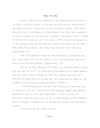
|
2021 may 22

|
2021 may 22

|
2021 jan 30
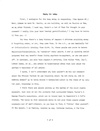
|
2021 jan 28

|
2021 jan 26

|
More... |
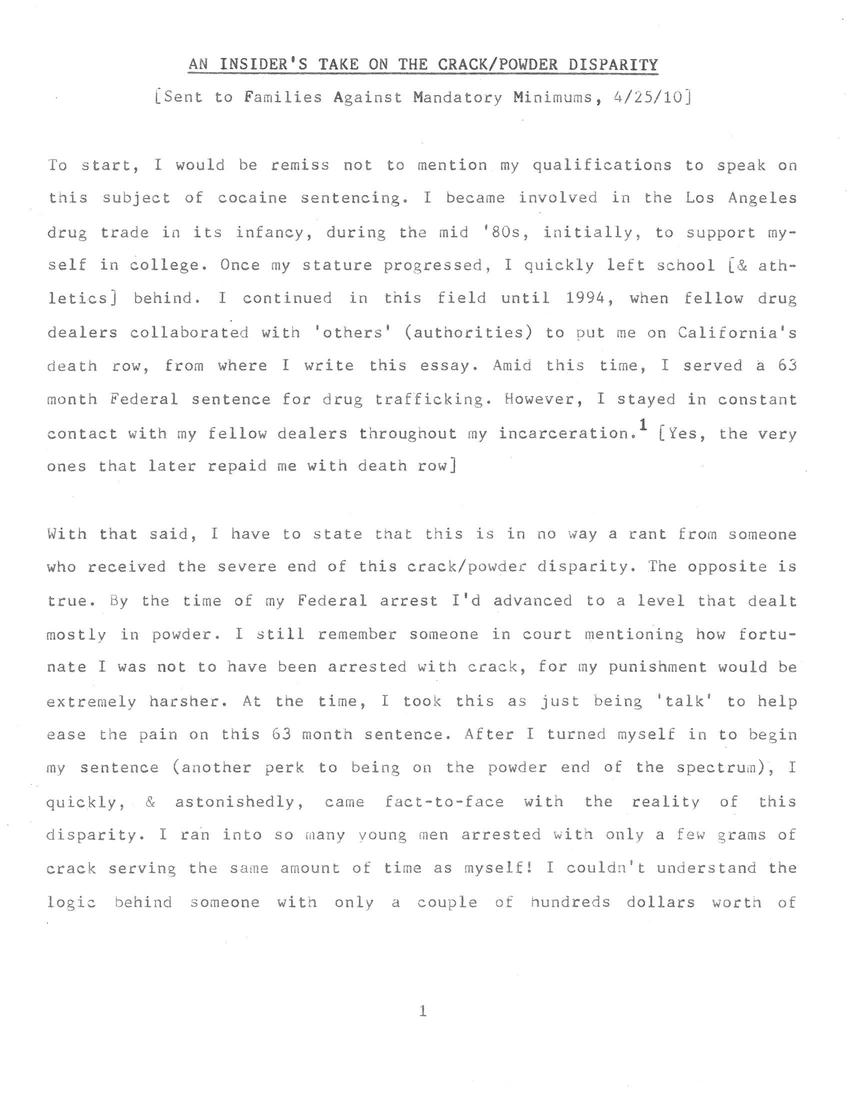
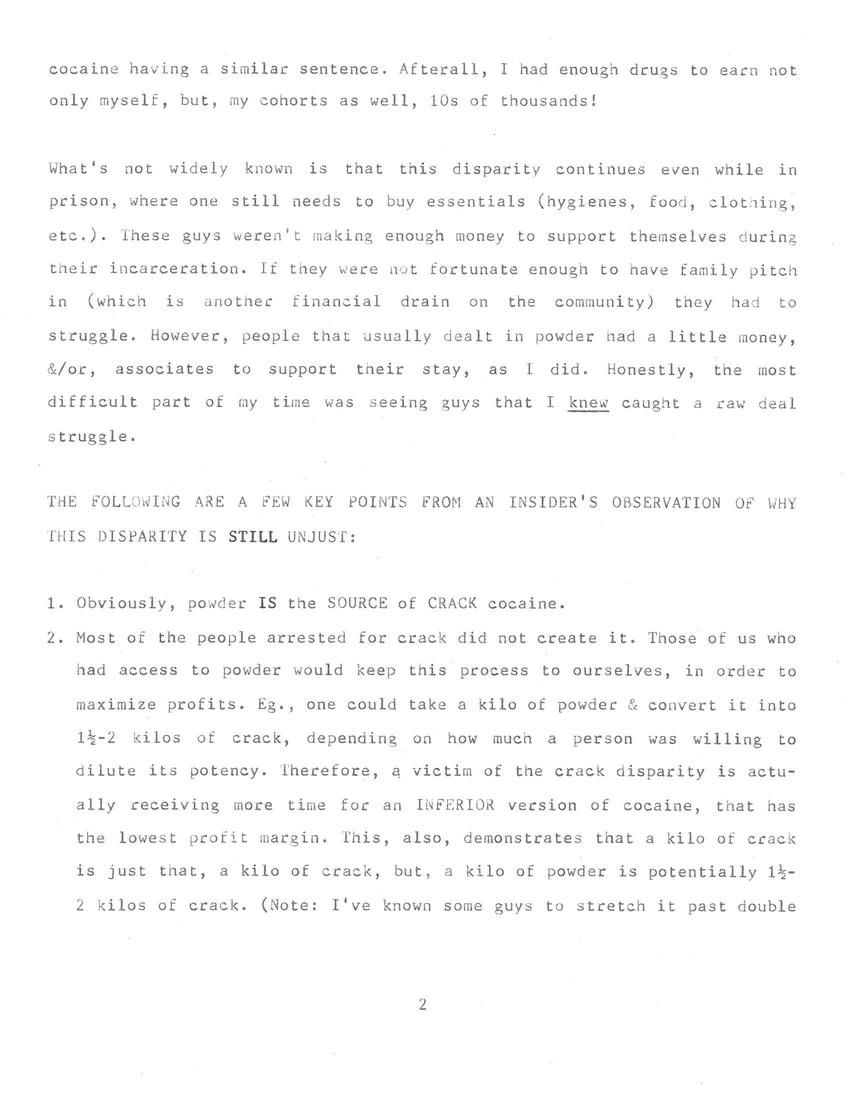
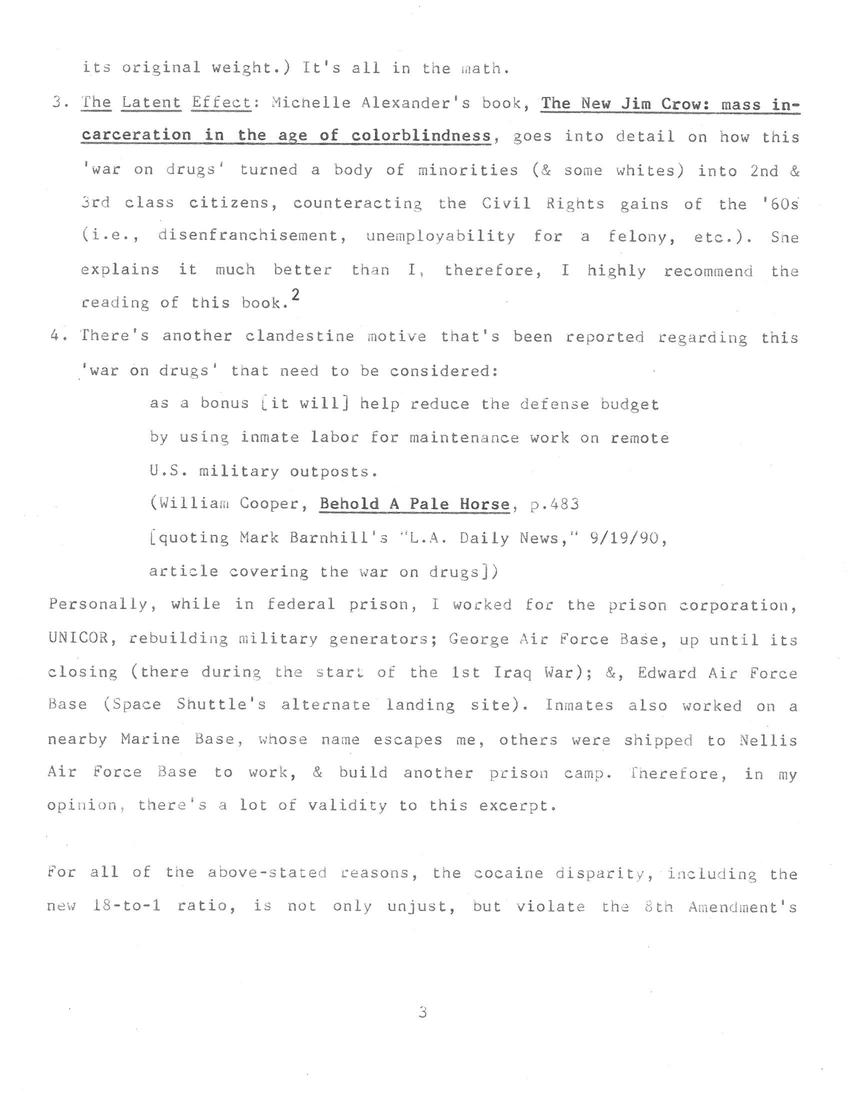
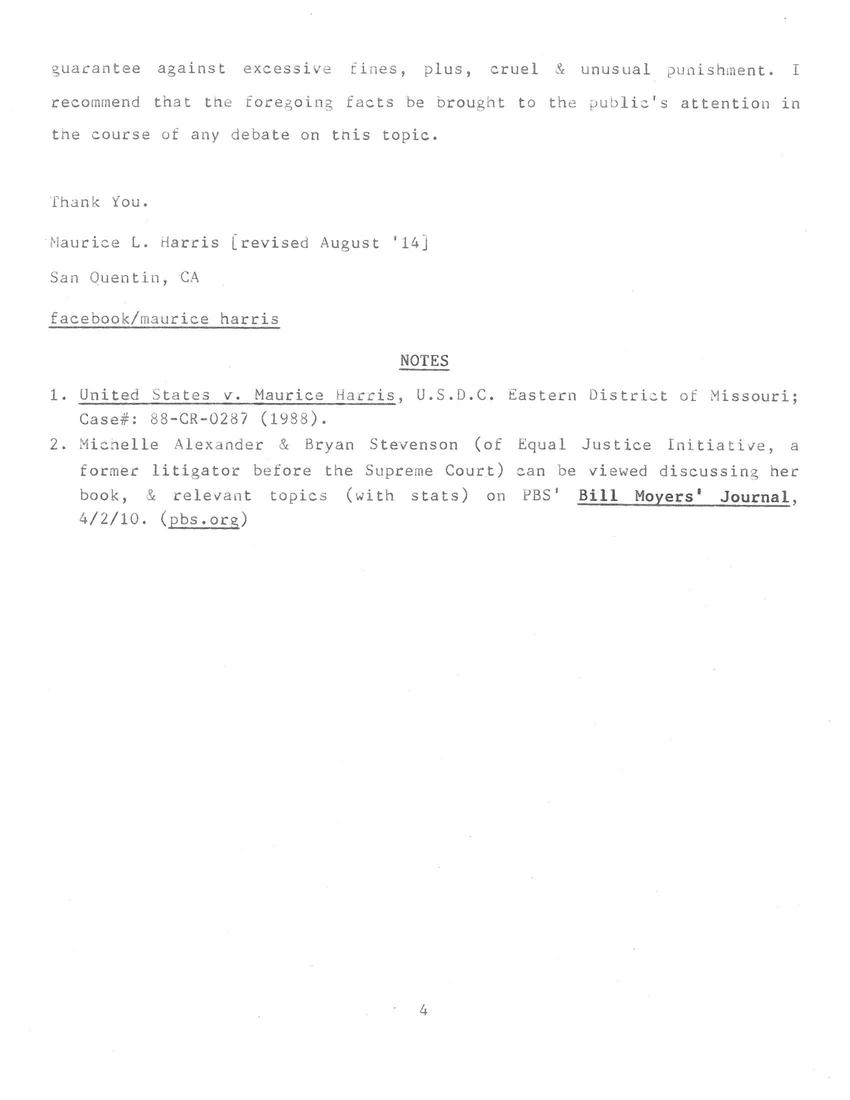

Replies